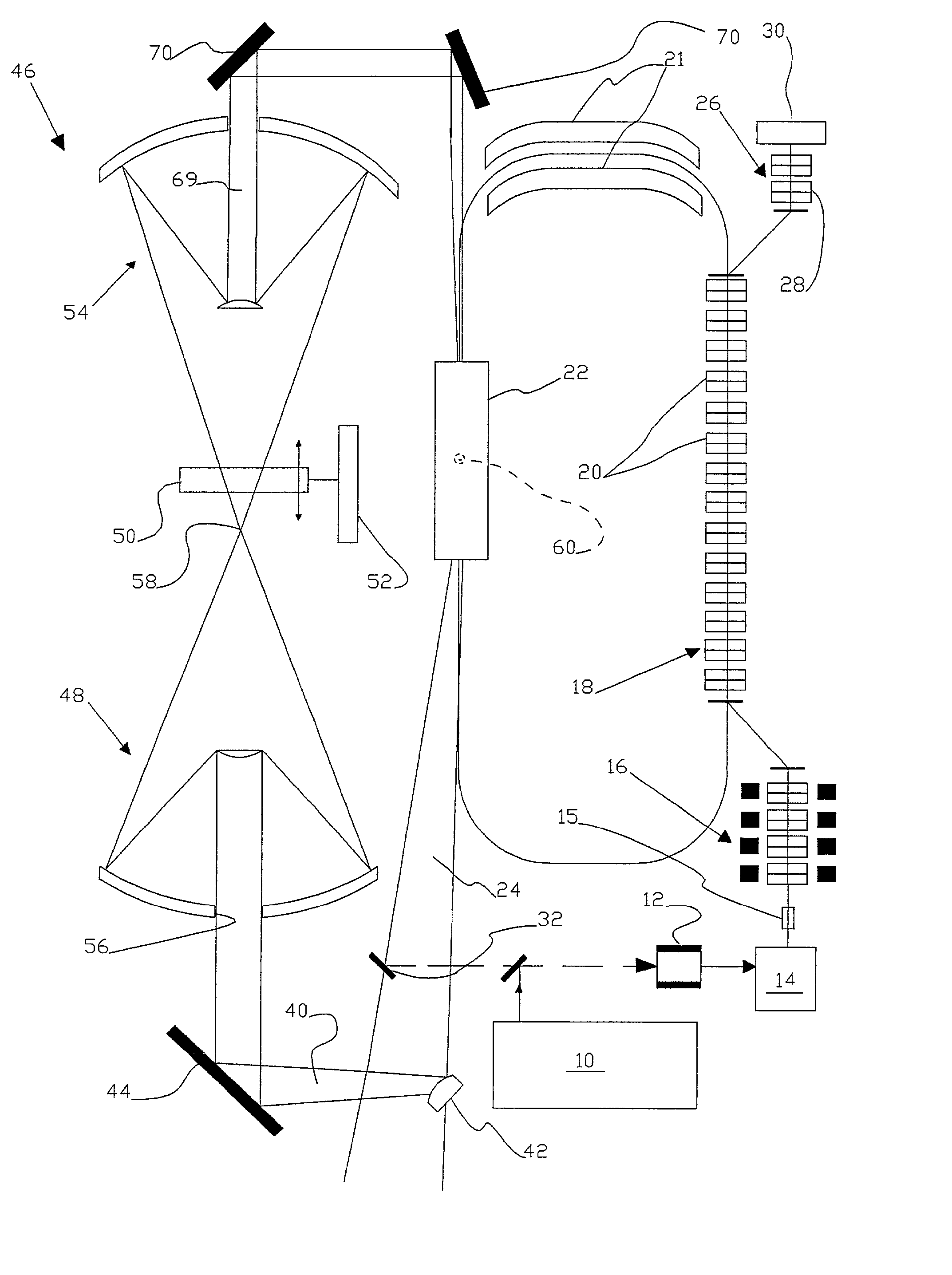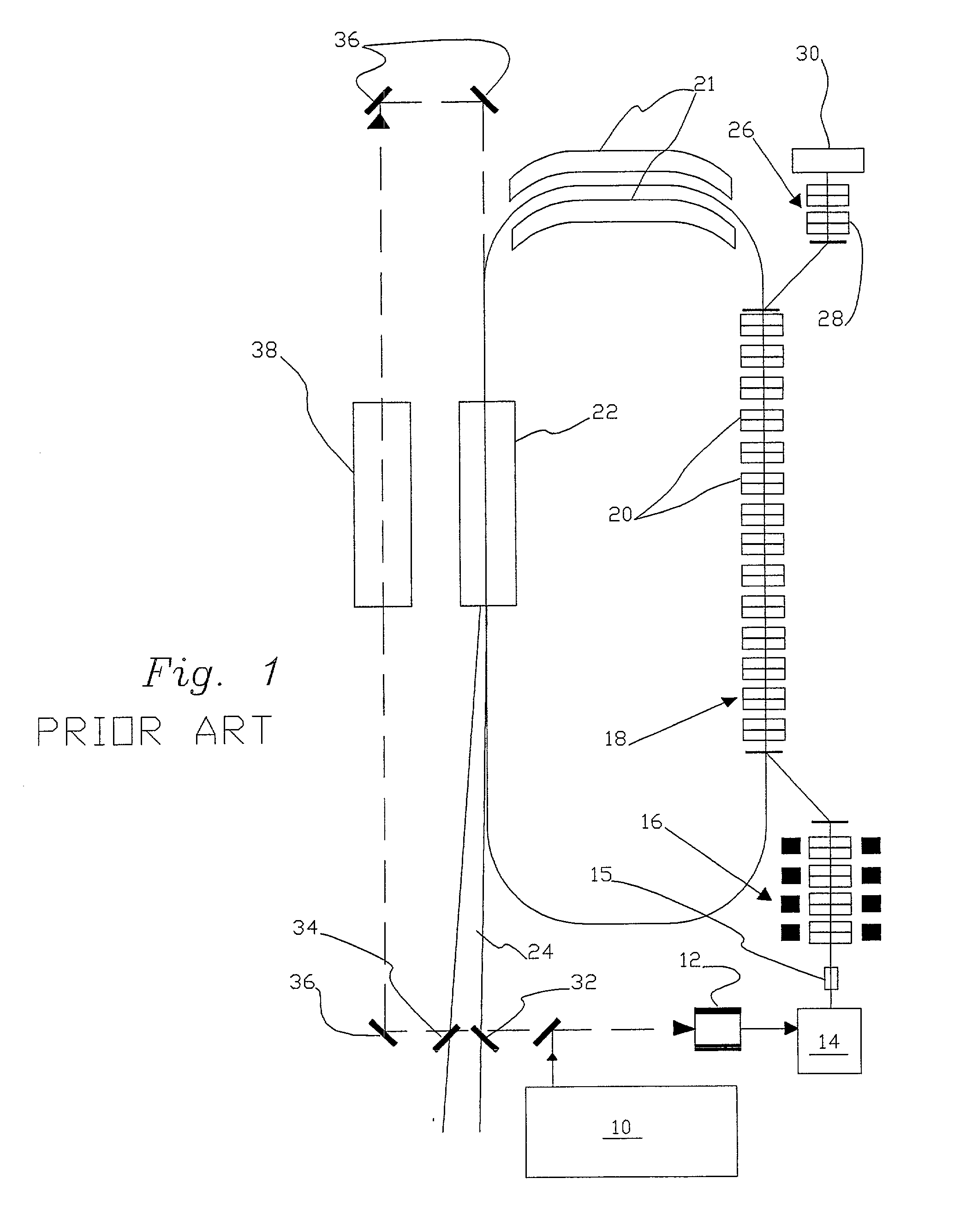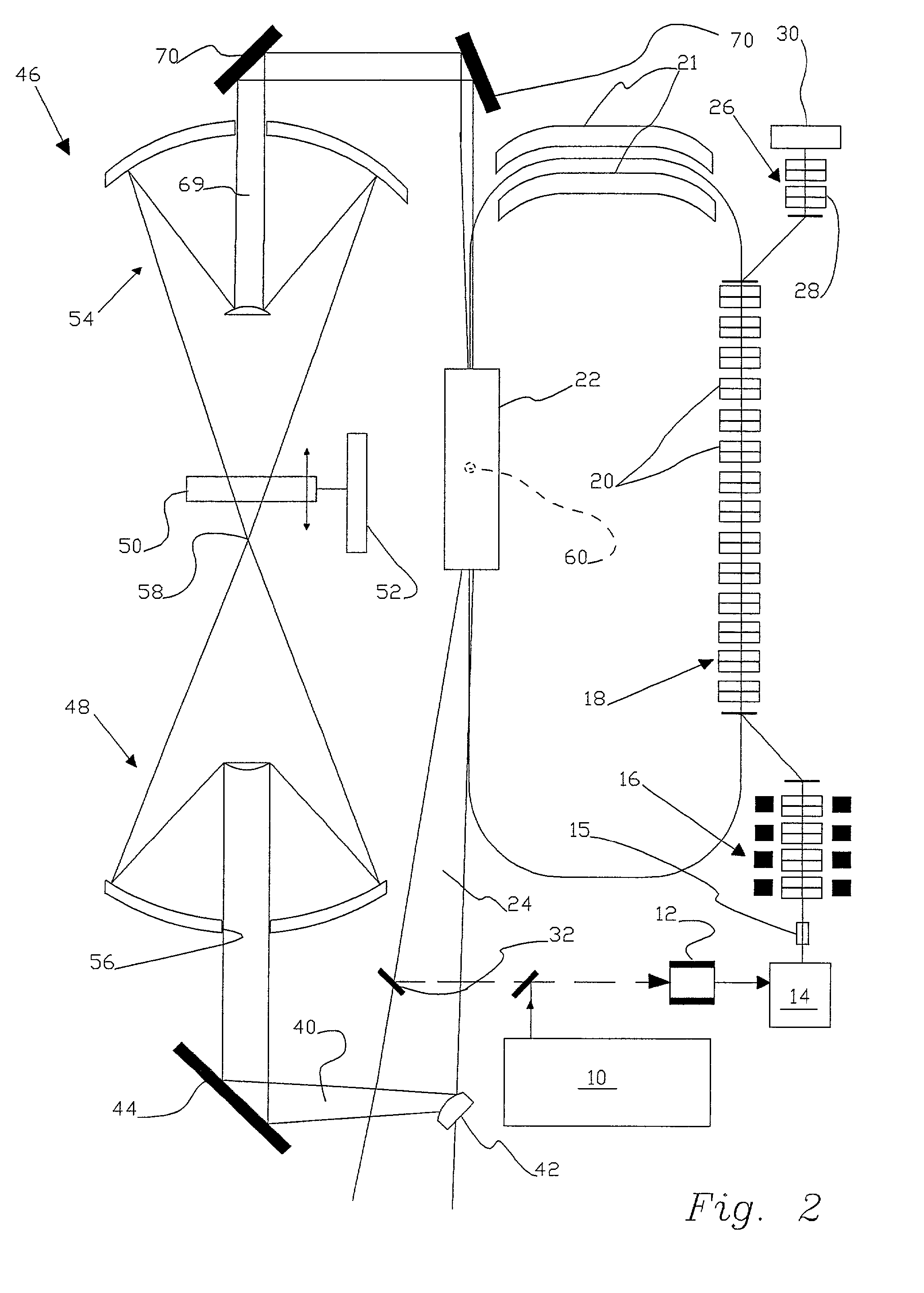Limiter optics
a laser and optical technology, applied in the direction of laser details, excitation process/apparatus, handling using diffraction/refraction/reflection, etc., can solve the problems of limited solar panels, limited power requirements of manmade space satellites, and inability to adjust the energy received from the sun
- Summary
- Abstract
- Description
- Claims
- Application Information
AI Technical Summary
Benefits of technology
Problems solved by technology
Method used
Image
Examples
Embodiment Construction
[0021] FIG. 1 is an example of a typical ignition feedback regenerative free electron laser (FEL) amplifier, IFRA FEL, suitable for laser power beaming, LPB. An optical pulse laser 10 has an up-converter 12 take an initial ignition pulse and convert it to a suitable wavelength before it is used to illuminate photocathode 14. Up-converter 12 will not change quality or intensity of light passing through it, but does convert to the best frequency for emission of photons with a given quality and intensity. Photocathode 14 in turn emits a bunch of electrons 15 with a pulse width determined by the design parameters of laser 10 and photocathode 14. This electron bunch is immediately accelerated by an initial accelerator 16. The electron bunch is now directed through a linear accelerator 18, which may have a large number of cooled RF cavities 20 operating near room temperature. Electron bunch 15 is now accelerated by the RF cavities to a speed very close to the speed of light. Electron bunc...
PUM
 Login to View More
Login to View More Abstract
Description
Claims
Application Information
 Login to View More
Login to View More - R&D
- Intellectual Property
- Life Sciences
- Materials
- Tech Scout
- Unparalleled Data Quality
- Higher Quality Content
- 60% Fewer Hallucinations
Browse by: Latest US Patents, China's latest patents, Technical Efficacy Thesaurus, Application Domain, Technology Topic, Popular Technical Reports.
© 2025 PatSnap. All rights reserved.Legal|Privacy policy|Modern Slavery Act Transparency Statement|Sitemap|About US| Contact US: help@patsnap.com



